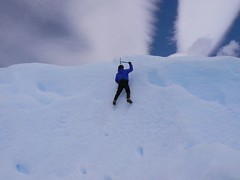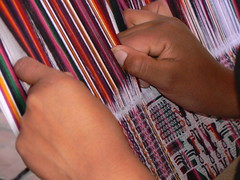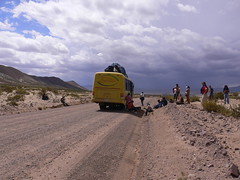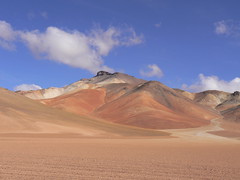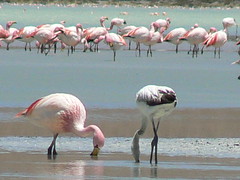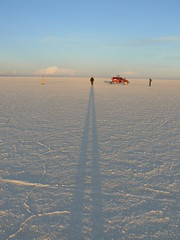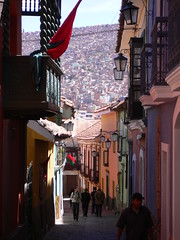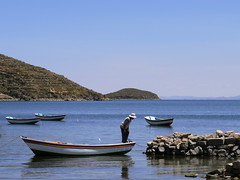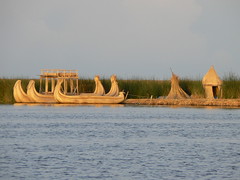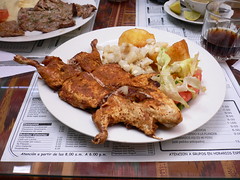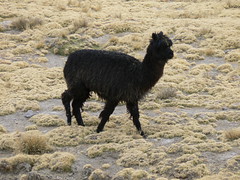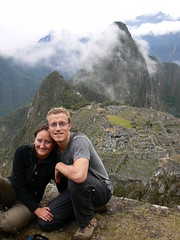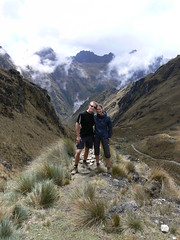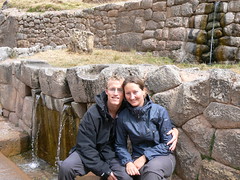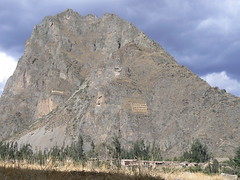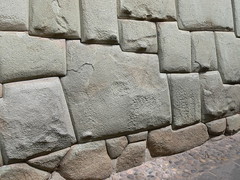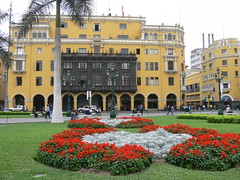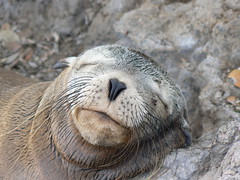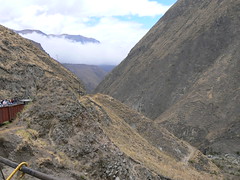Anyone wondering if we can relax on our holiday, being on the road so much? Well actually to a point where we totally loose track of time and date. On our way to the Galapagos Islands we managed to show up in Guayaquil a day too late according to our plane tickets. Ups! Luckily the flight agency rebooked our tickets without any nasty fees.
We arrived at the Galapagos Islands on a Sunday. The low season had just started so we hoped to do a good bargain and hook up on a cruise with unsold spaces, doing a scoop.
Reality worked out differently. We did do a good scoop, but on a very expensive boat making the Galapagos a real splurge for us.
Having said that – We need to say: Go to Galapagos! It is worth every penny – and more!!!!
The big thing with Galapagos is not all the different species of rare wonderful animals and birds you find there. It is not the great variety of landscapes you find on the different islands created by volcanoes millions of years ago. The big thing is the contact you get with the animals even though they are not tame.
Because 97% of the Islands are part of a National Park and Marine Reserve, no hunting are allowed by humans. In combination with the absence of predators, the animals have a unique safe environment where they don’t feel threatened.
The consequence is that a one meter long iguana will walk next to your shoes as if it could not care less that you were there, the hawk will let you take all the pictures you need before it goes off for hunting baby turtles, the flamingoes will dance few meters from you trying to catch their shrimps from which they get their pink color, the albatrosses will do their unique mating ritual as if you had paid them to do a show for you and the sea lions will play with you in the water every time you go for a swim. This is a place where animals and humans are actually living side by side. As a human being you can’t help feeling blessed. This is a very special place on earth.
Our boat was a huge catamaran. We were 10-12 passengers, 10 crew members and one guide. The itinerary meant some long sail trips visiting 9 different islands. Here are some of our highlights from each stop we made on the way:
Santa Cruz
For more than half an hour we sat quiet observing a group of 7 flamingoes tap-dancing in the water of a lagoon in their search for food (mainly shrimps) if they weren’t taking a nap on one leg with their head under a wing. Warm and cozy - that’s how they like to sleep. They got really close to us. Very magical start of our trip.
Rápida
Our first snorkeling experience at the Galapagos was a real treat. Two small fur seals swam few meters from us, a sea lion stared us in our eyes and played with us for what felt like minutes, a couple of huge Eagle-spotted Rays swam underneath us among the Kings Angel fish and the Parrot fish. A green sea turtle passed by us.
Biggest moment though was when a 1,5 meter white tipped reef shark came pretty close to us! A real shark! Imagine!!!
Bartolomé – snorkeling around the Pinnacle Rock
Another great snorkeling point. Few meters from us swam a couple of cute little penguins (the only type of penguins on the Northern Hemisphere). We also met two different kind of Rays and the playful sea lions as always. They have a tendency to act like torpedoes heading straight for you, for in the last second to make a u-turn.
Fernandinha - Punta Espinoza
Waking up early after a rough night at sea, we went to the sundeck to spot for dolphins and whales. Far away in the horizon we spotted the big splash of water from a whale. Another passenger spotted a dolphin. That’s all… well if you don’t take into consideration the animal life around the boat: Very near we kept seeing giant sea turtles breathing air in the surface, the sea lions played with the small fish, the flightless cormorants did amazing dives for food and even a penguin passed by. The Frigate birds was watching us from above. What a great way to wake up :-)
When we went ashore another great view greeted us. Hundreds of marine iguanas sunbathing on the black lava rocks. They are ugly but harmless – if you succeed in avoiding their salty spit. We also met a sea lion mummy and her few minutes old puppy – time stood still, as we sat down watching the mummy nurturing the puppy getting used to the World.
Main attraction on the Island though, was the Flightless Cormorants. Cormorants live in various parts of the world, but it is only at the Galapagos they have lost their ability to fly and instead have developed great diving skills. Their feathers though are not made for the water, so every time they have been taken a swim they have to stand in the sun with open wings, drying them…
Isla Isabela – Urbina Bay
Close-up with the huge yellow land iguanas habiting the island. They are impressive animals. You find land iguanas on several of the Galapagos Islands, but they are all different subspecies whom had spend millions of years adjusting to the specific environment characteristic for that specific island they once landed at, therefore they look very different on each island, and Isla Isabela is the only place where you find the big yellow ones.
Plaza Sul
Plaza Sul is a small Island full of land iguanas and sea lions, covering the beach and the rocks all looking really lazy.
The Island also has a huge cliff where we had our first close-ups with the sea birds: The funny looking Nasca boobies – or the even funnier looking Blue footed boobies (they really do have blue feet), Huge brown pelicans, lava-gulls who have red eyes and can see at night, and we also passed a red-billed tropical bird lying on its nest made in a small cave of rocks…way too small to cover its looong tail.
The walk among the seabirds got a sudden twist when our guide screamed: “Splash! Out at Sea!” We all turned around and could see a whale with her baby calf somewhere out there. We took a quick vote and decided to run for the boats to see if we could get a closer look.
On board at the Catamaran everybody went with their binoculars to the sun deck to help the captain spot the whales. 20 minutes later we were really close and could watch the humpback whale mummy teaching the baby ‘how to throw the whole body over the surface’ and ‘how to wave at tourists’. A great finale to a great day.
Santa Fé
Another swam of Land iguanas greeted us at this island. This subspecies was really big and fat!
As always the beach was covered with sea lions. These sea lions definitely made a clever choice not swimming today since the water near the beach was full of hordes of sharks hoping to catch a sea lion puppy for lunch. Incredible.
San Cristobal
After five days on the sea it was time to change some of the passengers (some people only go for a 4 or 5 day cruise). That meant time for us to hang around in a small touristy village and also time to visit the Interpretation Center explaining the Galapagos Islands history and everyday life. Interesting, - but not as cool as real contact with the animals ;-)
Isla Las Lobos
In the afternoon we had a great boat ride close to the nests of some seabirds. We saw the famous Great Frigate bird sitting on top of a tree with an inflated scarlet pouch like a balloon, hoping to attract a female to mate up with.
Highligth of the day also counted a Blue footed boobie baby sitting in its nest, looking cute in its very fluffy white outfit!
Española
At Española we had some really cool close-ups with the seabirds. The cliffs are covered with Nasca boobies and Blue footed boobies. The Nasca boobies where whistling at each other while they threw their wings back. Their special way of attracting a mate.
And best of all: The waved albatrosses. At this time of the year the Albatrosses reencounter their beloved one and that looks really funny. Impossible to explain…but it includes the sound of opening a wine bottle, sword fighting and clapping with the beaks and lots of kisses. Not even Broadway would be able to present a better show.
We also got close to the Galapagos hawk, the only predator at the Galapagos. It sat quiet in the top of a tree, looking for food…or funny looking tourists.
Again, our guide saw a big SPLASH out at sea, and again the hunt for getting close to the whales started, but this time in our small panga boats, which turned out to be a big adventure, since the waves just got bigger and bigger, and we just got smaller and smaller. When the guide gave up finding the whales, it was with great relief that we went back to the boat, where we all smiled at our fortune of still being alive…
Floreana
The most extraordinary experience on Floreana Island was to stand with several sting rays around our feet in the low water at the beach. We got one instruction, be careful of not stepping on them, or they will sting. Apparently the Australians instructions where not as good…
The snorkeling of the day was at the Devils Crown, that offered numerous tropical fish, but the 10 cm. close encounter Barbara had with a big sea turtle was the highlight! If it hadn’t dived, the strong current would have given Barbara a nose kiss with the turtle. Another magic moment at the Galapagos.
The final tour brought us to the oldest post office in the world, which consists of a barrel where the sailors leave their mail to be picked up by others who are heading home. It actually still works today! We are bringing home a postcard left by a couple of Danish children living in Hadsten.
A really great trip which we will treasure in our memory for a very long time. All the wonderful daily encounters we had with the animals, the superb service we got on the boat, the fresh air that always embraced us – and the really nice feeling of having a base, which was a nice contrast to our ‘normal’ backpacker life. Who would have imagined that we would find our most solid base at sea!
Now several days after being back on mainland, Barbara still have the sensation of being on sea…but as the guide said “Just enjoy the ride as long as it lasts – it’s a nice ride!”
P.S. Henrik actually got kissed by a few months old sea lion puppy. Imagine that!

